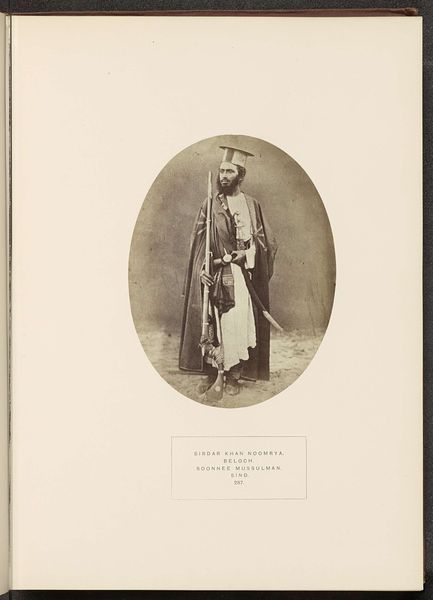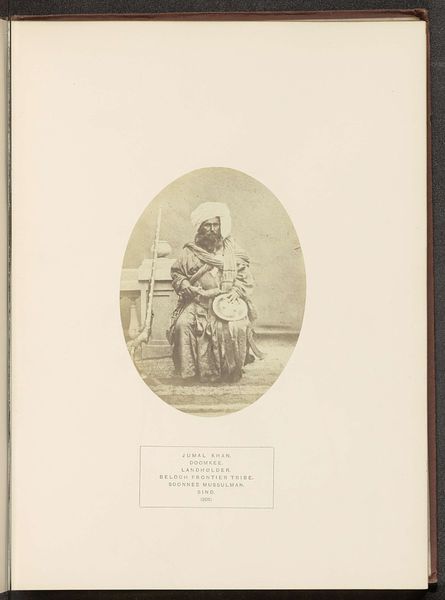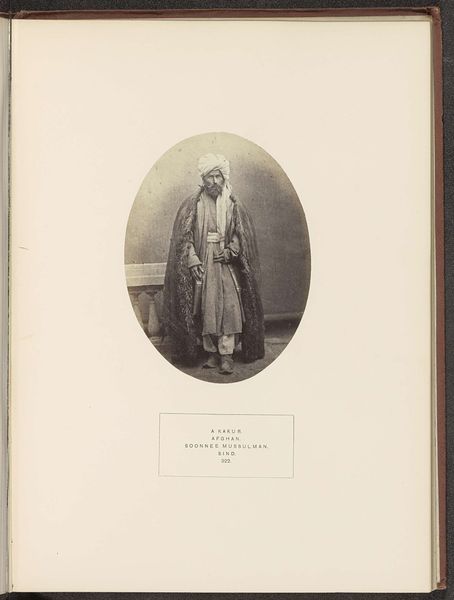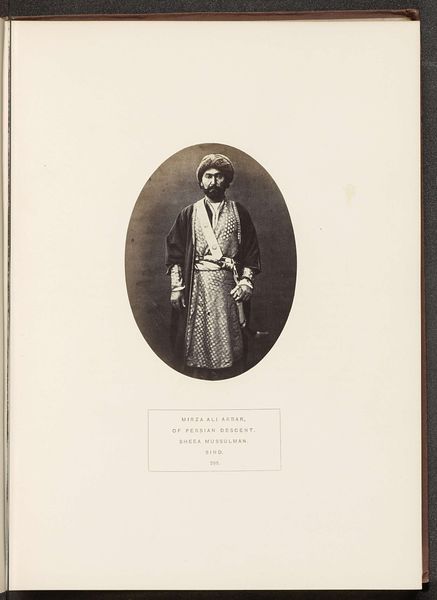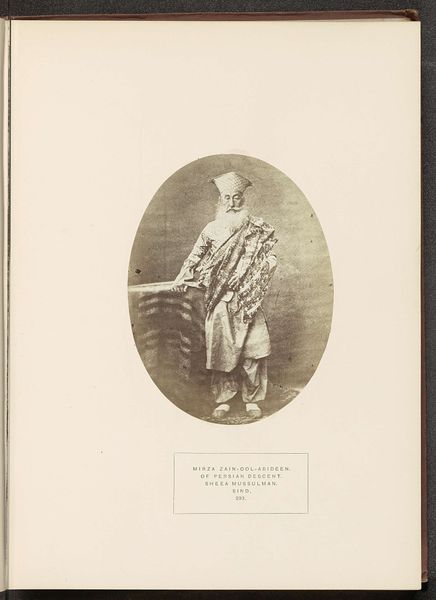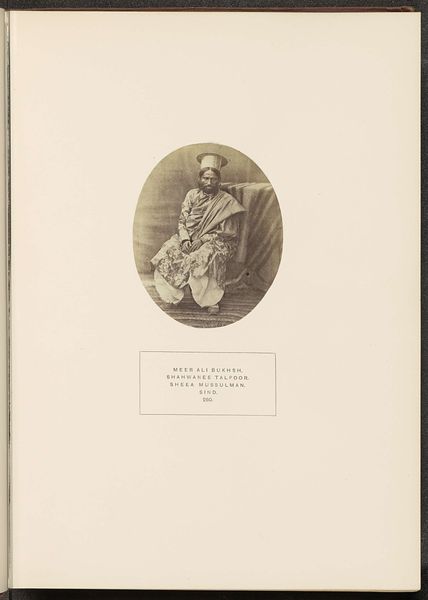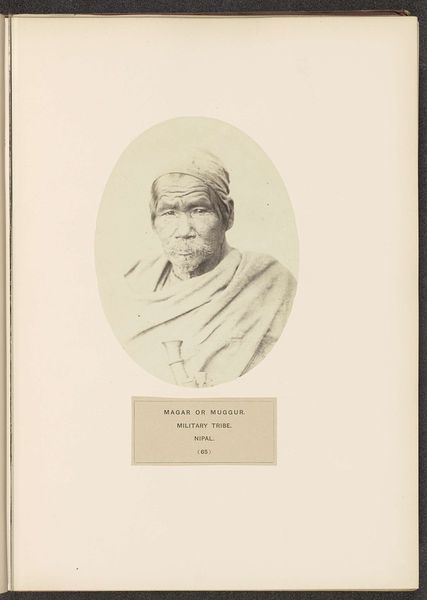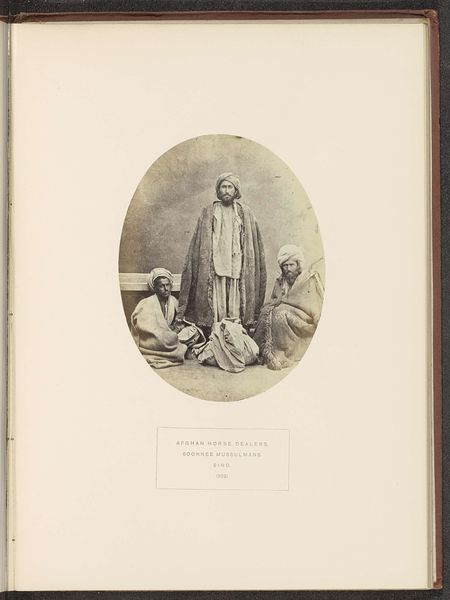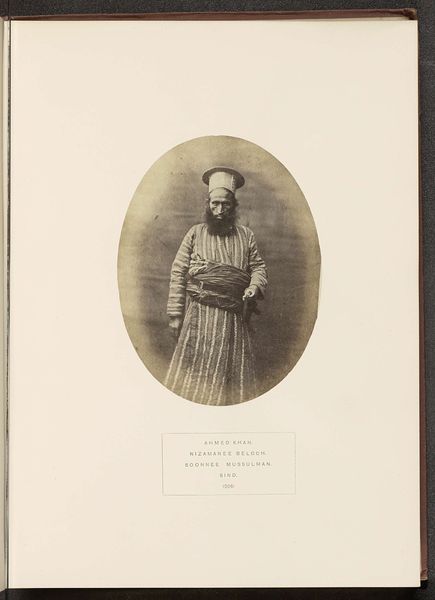
Portret van Shere Mahomed Khan, een soldaat in het eerste Baloch regiment before 1872
0:00
0:00
photography
#
portrait
#
african-art
#
photography
#
realism
Dimensions: height 154 mm, width 120 mm
Copyright: Rijks Museum: Open Domain
Editor: Here we have Henry Charles Baskerville Tanner's "Portrait of Shere Mahomed Khan, a Soldier in the First Baloch Regiment," taken before 1872. It's a photographic portrait, and something about the sepia tones gives it a really somber mood. The composition is also interesting – almost staged, but the man's gaze feels very direct. What stands out to you in this piece? Curator: The meticulous staging indeed presents an intriguing paradox. The formality of the pose—the subject leaning on what appears to be intricately patterned fabric, his hand resting just so—contrasts with the evident detail captured by the photographic process. Note the texture of the uniform, the precision of the turban's folds. What semiotic weight do these elements carry, considered in relation to the subject's apparent rank and the context of colonial portraiture? Editor: So you’re suggesting that the textures and the details carry some symbolic meaning beyond just being realistic? Is it about power or status maybe? Curator: Precisely. Consider the interplay between light and shadow across the subject's face and attire. Where does the artist direct your gaze? The formal qualities invite a careful assessment of how the photograph functions, both as a representation and as a constructed image. Does the rendering of detail undermine the potential for idealization, or does it serve another purpose? Editor: I see what you mean. Focusing on the details instead of looking for historical or cultural meanings really emphasizes how much thought went into presenting this figure, even in what seems like a straightforward portrait. Curator: And that heightened awareness is, for me, the reward of formal analysis. By closely examining its construction, we arrive at new perspectives.
Comments
No comments
Be the first to comment and join the conversation on the ultimate creative platform.

